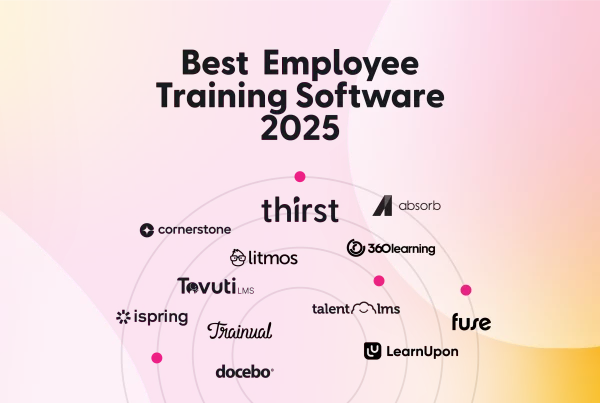Just a few years ago, almost all work-related activities happened face to face. Meetings, socials, and training for the most part took place in the flesh. But little did we know that things were about to change in a big way…
Along came Covid and suddenly we were ordered to stay home. Our work life was about to transform entirely, and potentially, forever.
No more commute. No more water cooler chat. No more meetings in the conference room.
The words “Dave, we can’t hear you… you’re on mute” would be the new running joke in the office and wearing a smart top and pyjama bottoms would become our new work wardrobe.
Fast forward to 2022.
• Working from home has more than doubled compared to pre-pandemic numbers, increasing from 14% to just over 30%.
• Video calls have become the done thing with Zoom reporting a quarterly revenue increase of over 600% since 2020.
• E-learning has ramped up by 64% in the past few years, and 67% of larger companies now deliver some form of online learning.
In a nutshell, people are now able to design their work life in a way that suits them. Some people work from home, some go into the office, some do both. Some people rely solely on video chat, some prefer in-person meetings where possible, some do both. Some people like to exclusively learn online, some prefer traditional classroom-style teaching, some like a mix of the two.
With the rules a lot more fluid and individual employee preferences now considered much more than ever before, companies have seen the benefits of and willingly embraced the new hybrid world, adapting the way they work to more permanently adopt the changes they were forced to make during the pandemic.
Blended learning in a hybrid world
In the summer, we wrote about the pros, cons, and potential challenges of remote working which included maintaining company culture, ensuring a good onboarding experience for new starters, streamlining tech, and supporting your employees remotely on their L&D journey.
Making sure your team are motivated on their learning journey when it’s solely online can be tough, which is why a blended learning approach is fast becoming a popular alternative for companies looking to up their L&D game.
What is blended learning?
Blended or hybrid learning is quite literally a mix of self-directed online learning and traditional in-person instructor-led courses. Many companies adopt blended learning as their L&D strategy and it’s easy to see why.
The pros to blended learning include:
• Supporting all types of learners
• Offering different styles of delivery of materials can help engagement and motivation
• A mix of online learning and classroom-style teaching means employees get the chance to combine a solo learning journey with one that involves their peers which is important when cultivating a learning culture within your company
Is e-learning alone enough?
For some companies, absolutely, especially those that work fully remotely or who have a younger, more digitally adept workforce who are much more used to online learning in life and at work. A learning platform that tailors content based on an employee’s interests and delivers it in a format that the individual finds easiest to consume is exactly the type of personalised, engaging L&D that is soaring in global popularity for its ease of implementation, uptake and effectiveness.
For other businesses, a combined approach, selecting an online learning platform that works alongside classroom-style teaching, could be just what you need.
Ask yourself what’s missing
If your business has adopted a mostly in-person classroom style approach to L&D, you might have noticed some gaps in training and development, or a lack of motivation from your staff to complete learning. The beauty of an online learning platform like Thirst is that it gives your employees the power to make decisions and have control over their learning journey; what they’d like to learn (choosing the subjects and skills they already have and what they want to work towards), how they’d like to learn (choosing from a range of formats the ones which work best for them) when they’d like to learn (accessible 24/7 on any web-enabled device), as well as being able to learn from their peers, set their own goals and track their progress in achieving them.
That’s not to say you can’t continue with classroom teaching, but by adding an online option to your L&D strategy, you’ll very likely see a huge uptick in enthusiasm and motivation from your employees to upskill, acquire new skills, and set fresh challenges for themselves and their professional growth.







